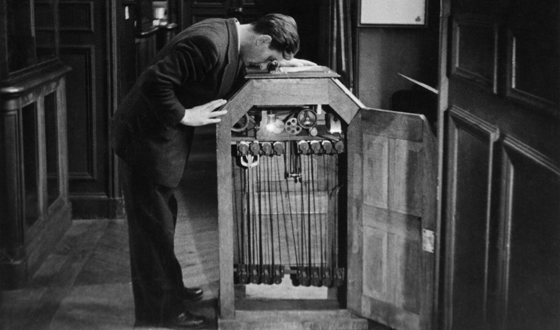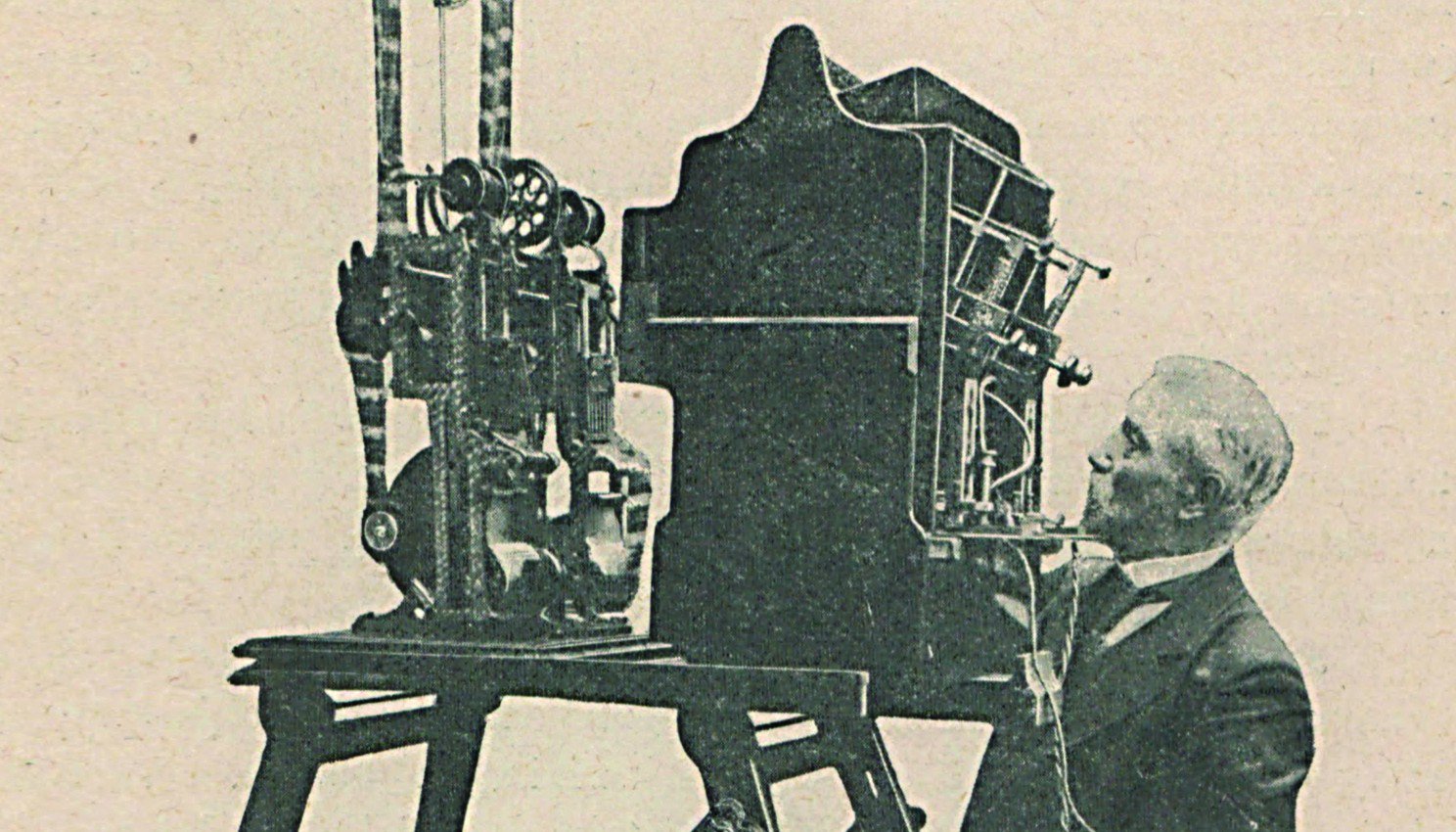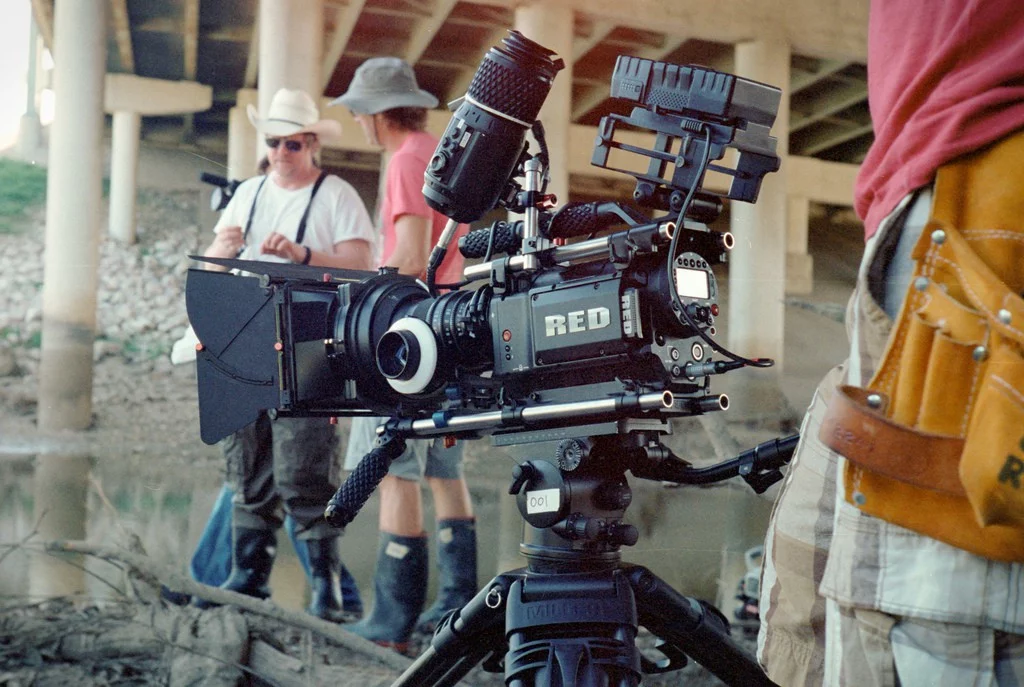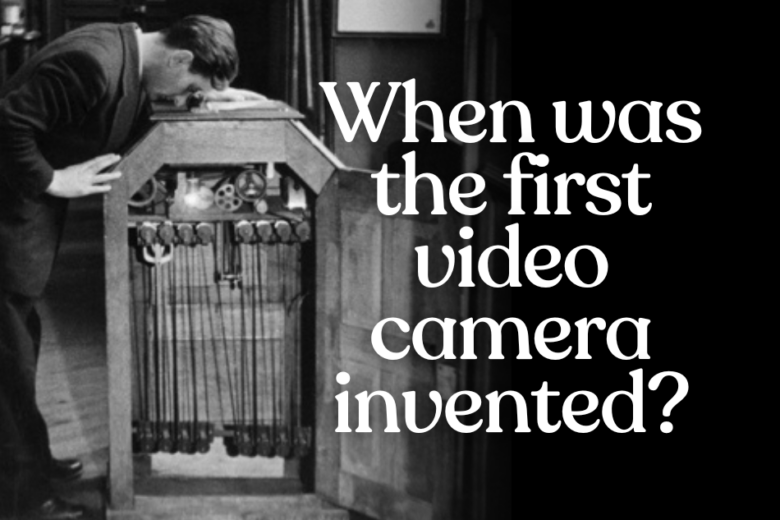We’ve come a long way from the era when the first video camera was invented. Nowadays, most of us have one sitting in our pocket—you might even be reading this article on the same device you use to capture video!
Let’s take a closer look at how we got here, from the first video camera to today’s smartphone technologies.
WHEN WAS THE FIRST VIDEO CAMERA INVENTED?
We have Louis Le Prince, a French inventor, to thank for the first-ever video camera.
In 1888, he created a single-lens camera capable of capturing moving images on celluloid film. The most famous footage from this camera, Roundhay Garden Scene, is a short, two-second clip featuring Le Prince’s family and friends walking in a garden.
This historic recording is widely recognized as the first film ever made. Le Prince’s invention laid the foundational technology for the development of modern cinematography.
FIRST MODERN VIDEO CAMERA TIMELINE
The video camera as we know it today has come a long way from Le Prince’s bulky camera from the late 19th century. Its evolution is marked by several key innovations and technological advancements over the last 130 years.
1891 – KINETOGRAPH

Thomas Edison and his assistant William Kennedy Laurie Dickson invented the Kinetograph, an early motion picture camera capable of capturing moving images on a strip of perforated film.
1894 – PLEOGRAPH

Kazimierz Prószyński, a Polish inventor, developed the Pleograph, an early movie camera and projector. It improved on Edison’s Kinetograph by incorporating a stop-motion mechanism to prevent film from tearing, making film projection more reliable and higher quality.
Prószyński also invented the first-ever portable video camera, which captured film using a hand crank and compressed air. This was a huge win for newscasters who could film on location, and it was used at battle sites during World War I.
1920S – TELEVISION SYSTEMS
During the 1920s, inventors like John Logie Baird and Philo Farnsworth made significant strides in developing television systems.
Baird demonstrated the first working television system in 1925, while Farnsworth’s all-electronic television system, developed in 1927, laid the groundwork for modern TV broadcasting.
1930S – ICONOSCOPE AND IMAGE DISSECTOR

Vladimir Zworykin’s Iconoscope and Philo Farnsworth’s Image Dissector, both developed in the 1930s, were crucial early television cameras.
These devices worked similarly—they converted light into electronic signals, which could then be transmitted and displayed as images.
1950S – VIDEOTAPE RECORDER
Ampex introduced the videotape recorder (VTR) in 1956, revolutionizing video recording and playback. The VTR enabled television stations to record programs and play them back later, significantly enhancing broadcasting flexibility and efficiency.
1980S – BETAMOVIE
Sony’s Betamovie, introduced in 1983, was the first consumer camcorder to integrate a video camera and a videocassette recorder into a single unit. This portable device allowed users to easily record and playback video, making personal video recording more accessible and popular.
THE EVOLUTION FROM THE FIRST VIDEO CAMERA TO WHERE WE ARE TODAY
These days, everyone is walking around with a video camera in their pocket. It’s a far cry from Le Prince’s video camera of the 1800s. So how did we get here?
THE ANALOG ERA

The introduction of videotape recorders (VTR) in the 1950s marked a whole new era in video recording. Over the following few decades, it underwent several improvements until camcorders became a common household item in the 1980s and 1990s.
Ampex’s Quadruplex VTR, introduced in 1956, was the first commercially successful videotape format. It allowed for higher-quality recordings and was widely adopted by television networks for broadcasting.
In the 1980s, camcorders became popular consumer devices, integrating video cameras with VCRs. People could record personal videos and play them back on home TVs.
Yes, these camcorders were bulky by today’s standards but marked a significant shift towards personal video recording.
THE DIGITAL REVOLUTION
In the 1990s, digital video cameras began to replace analog formats. Personal cameras could now capture video in a digital format, offering better picture quality and editing capabilities.
DV (Digital Video) and MiniDV tapes became popular, offering higher resolution and easier editing on computers.
The next evolution, digital camcorders, introduced in the late 1990s and early 2000s, were compact and affordable, making digital video recording readily accessible to consumers. These camcorders recorded directly to digital tape and even had features like digital zoom and image stabilization.
THE HIGH-DEFINITION DIGITAL VIDEO CAMERA

The early 2000s saw the emergence of HD (High-Definition) camcorders, which could record video in resolutions up to 1080p. These cameras’ video output was much higher quality and clarity compared to the camcorders of the 1990s.
Formats like AVCHD and HDV became popular, allowing consumers and professionals alike to capture and edit high-definition video.
Around the same time, digital cinema cameras like the RED ONE and ARRI Alexa revolutionized filmmaking. These cameras offered even higher resolutions and dynamic range, catering to the needs of professional filmmakers and productions.
CELL PHONE CAMERAS
As smartphones became ubiquitous in the late 2000s and early 2010s, cameras became a standard feature.
Initially, phone cameras offered low-resolution photos and videos. However, advancements in sensor technology and processing power quickly improved their capabilities.
Today’s smartphones feature advanced camera systems with multiple lenses, optical image stabilization, and computational photography techniques. Phone cameras can record 4K video and slow-motion footage and even support HDR (High Dynamic Range) video recording.
The convenience of having a high-quality video camera in your pocket has transformed how people capture and share moments. Social media platforms and video-sharing sites have further fueled the demand for easy-to-use, high-quality video recording devices.
The evolution of video cameras has seen a remarkable journey from bulky analog devices to today’s sleek digital and smartphone cameras. While it feels commonplace now to whip out our smartphone to capture special moments, it wasn’t always this easy.
Some of our most cherished memories were captured on old formats, like film, VHS, or MiniDV, and it’s crucial that we preserve these memories for future generations.
If you have old home movies sitting on tapes or film, consider digitizing them with EverPresent.
We specialize in preserving analog formats into digital, ensuring your precious memories are easily shareable and accessible for years to come.
Visit EverPresent to learn more and start preserving your memories today.

